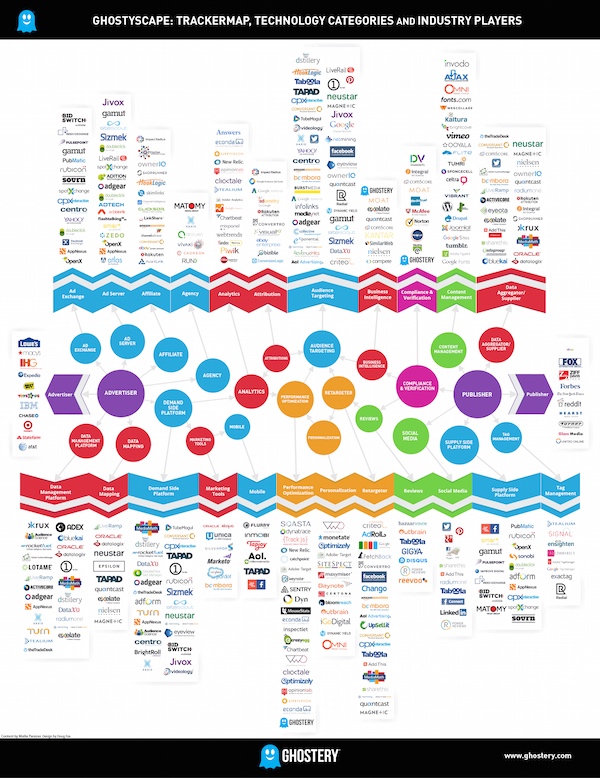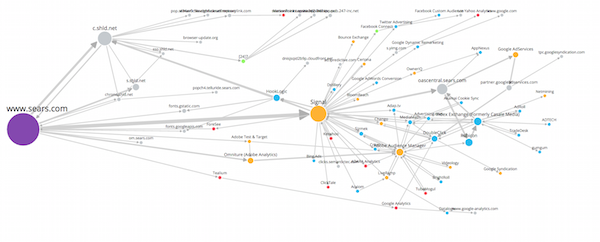As a rule of thumb, people wildly underestimate the number of marketing technologies they have deployed in their organization — sometimes by a factor of 2X, sometimes by a factor of 10X or more.
“We use 2-3 marketing technologies,” they might answer in a survey, when in truth, they use more like 20-30 products from the marketing technology landscape.
It’s completely understandable, of course, as marketing technologies are not weighted equally. Executives naturally remember the major investments they’ve made — for instance, in a web experience management platform or a marketing automation platform. But the myriad of more specialized software and subscription services adopted at the layers below tend to blend into the scenery of marketing in a digital world.
As any good social scientist or UX designer will tell you, if you want the truth, you need to observe it instead of asking for it. The empirical folks at Ghostery have done just that to shed some light on how many technologies marketers actually have in their marketing stacks.
Ghostery offers a set of products that scan your website from a client-side perspective and map out all of the software services that are triggered on your web pages. They follow the chains of requests of tags that embed more tags that call other Javascript functions and so on, helping you visualize the full ecosystem of software living on your web pages.
Here’s an example from their site showing what this ecosystem map looks like for Sears (click for a larger, more readable version):
Most people’s reaction to these graphs — especially when they are mapped from their own website for the first time — is like Dave Bowman, “My God, it’s full of stars.”
Ghostery is used by companies to optimize the performance of their sites and identify security holes. After all, those software services being triggered on your web pages have computational overhead that can potentially drag down client-side experiences — or potentially pass along data to an unexpected network of third parties to third parties. (Fourth party data?)
But here, they serve a more modest purpose: to illustrate just how large marketing stacks really are in practice. These Ghostery maps only show a slice of a company’s marketing stack — the slice that’s visible from scanning client-facing web pages. There’s more happening backstage, for sure. I guarantee you, more than you expect.
For more discussion of that, see my article from a couple of years ago: marketers regularly use over 100 software programs.
The infographic at the top of this post was created by Ghostery to show the most common marketing technologies encountered in their website analyses, organized by their business functions (i.e., why do people install all these software tags? — actually for good reasons).
You can read the full post accompanying the infographic on Ghostery’s blog. To quote that post by Mollie Panzner, the firm’s director of professional services:
With the analysis of millions of real-user data points, Ghostery has found that a large website has an average of 75+ digital technologies.
Yeah, that’s more than 2-3.
Interested in more marketing technology insights? Don’t miss MarTech Europe in London, November 1-2, featuring over 25 vendor-independent, educational sessions on the interplay of marketing, technology, and management.





I recently completed a discovery with a leading UK university. That highlighted 36 different technologies in use with their small marketing team. Including significant overlap in functionality. Removing duplication is what I consider the ‘low hanging fruit’ for an organisation. Getting the remaining complimentary solutions to work seamlessly is a more challenging but more valuable task.
Wow! This is madness! I’m sure we use more than we think we do. We’ve recently replaced some with GetResponse marketing automation, though I’m sure there’s still some tools that overlap in functionalities.